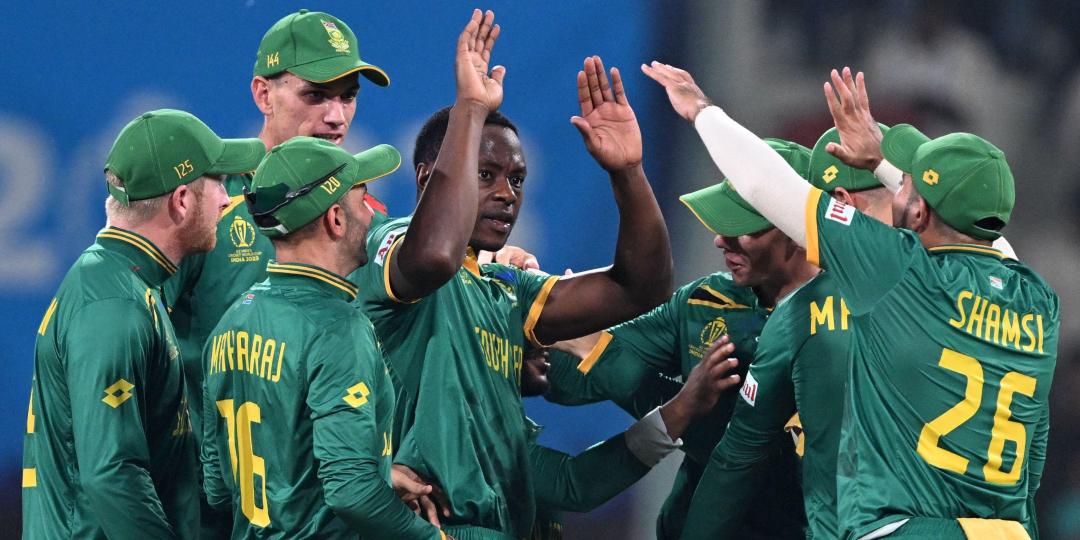The next Cricket World Cup will be co-hosted by South Africa, Zimbabwe and Namibia in 2027, which tourism industry leaders in the region have called a boon for tourism across the entire value chain.
The tournament is scheduled for October and November. Exact dates and venues will be confirmed closer to the time. It will expand to 14 teams (up from the current ten) and will have two groups of seven, with the top three teams in each group progressing to a Super Six stage, followed by semi-finals and a final. Each team in a group will play all the other sides in the same group once.
Namibia
Gitta Paetzold, CEO of the Hospitality Association of Namibia (HAN), told Tourism Update that hosting a prestigious event such as the Cricket World Cup in the country had prompted decision-makers and sponsors to support the construction of a fully fledged international cricket oval in Windhoek where key games would be played.
She added that, while HAN as an association was generally not directly involved in marketing campaigns, it recognised the huge opportunity to showcase Namibia as a destination of choice, in particular to those cricket supporters who have not as yet considered the country as a travel destination.
“Known by some as ‘Africa's best-kept secret’, or ‘Africa-light’ by others, this land of wide-open spaces, endless horizons and vast diversity has so much to offer – from the oldest desert, vast and rough coastline lining the entire western border of the country, to being the hub of KAZA (Kavango-Zambezi Transfrontier Conservation Area, the largest trans-boundary conservation area linking five African countries).
“As such, visitors to Namibia during the World Cup will be enticed and invited to ‘linger longer’, not only to support their teams, but also to discover the wonders and uniqueness of this part of the world,” said Paetzold.
She added that Namibia was well established in terms of infrastructure and air access to host such a big event.
“In all regions, visitors will be able to select tourism products to suit their style and pockets, from high-end stylish lodges that have attracted the likes of Sir Lewis Hamilton (seven-time Formula 1 World Champion) to this part of the world, to middle-market lodges and glamping camps, as well as camping facilities. We have direct flights from Ethiopia and Germany, as well as South Africa and Victoria Falls (Zimbabwe), and our roads are rated as one of the best in Africa.”
Paetzold believes that the tournament provides an ideal opportunity to showcase and present Namibia to markets that are currently not part of its traditional source markets.
“We are confident that, once in Namibia, the word-of-mouth advertisement for our country will be more valuable than any other paid marketing campaign. This is of particular importance, given Namibia's limitations in terms of available financing, to pay for aggressive international marketing campaigns. We further believe that marketing a country through sport and other events involving authentic human interaction is the most effective way of marketing.”
She concluded that, between now and 2027, Namibian tour operators would develop a selection of packages to be marketed to the world cricket community, which is something that Cricket Namibia (the country’s cricketing board) is already hard at work to see showcased.
South Africa
Rosemary Anderson, FEDHASA National Chairperson, said the World Cup presented a valuable opportunity to showcase South Africa's natural beauty, vibrant culture, and world-class hospitality to fans from across the globe.
“Tournament tourists who visit solely to attend the matches often experience only a narrow slice of what South Africa has to offer during their brief stay. However, our country is renowned for its exceptionally high rate of return and repeat visitors – one of the highest in global tourism. Once these tournament tourists get a taste of South Africa, there is a strong likelihood many will choose to come back with their families or on their own to enjoy attractions and experiences they simply did not have time for initially,” she said.
She added that an influx of fans and teams would provide a massive boost to the regional economies. “Hotels, restaurants, transportation providers, vendors and other tourism-related businesses can expect brisk trade and increased revenues, ensuring they capitalise on this economic windfall.”
David Frost, CEO of SATSA, agreed that the World Cup would generate tremendous exposure, attracting thousands of first-time visitors and spurring an ongoing tourism boom.
“The revenue and jobs created will inject substantial spending into our national economy for years to come – far outweighing the required infrastructure investments if we lay the proper groundwork immediately,” he said.
To this end, Frost cautioned that, in order to maximise the long-term benefits of such a big event, strategic planning and smart investments were vital.
“We must upgrade transport networks and accommodate the influx of visitors by increasing air access. Our gaps around an ineffective e-visa system, road safety and maintenance must also be promptly addressed.
“Effective destination management will ensure tourists enjoy seamless, secure and positively memorable experiences that turn them into South Africa's cheerleaders back home,” Frost concluded.























